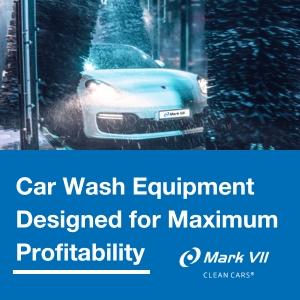
Assessing the lessons learned as a retail-fuel site owner exits the industry after nearly 50 years in business
By Ed Life’s Kammerer
A First Person Case Study
The retail fueling journey for one business owner in northern Ontario began nearly 50 years ago with the inheritance in 1976 of a fueling site that had been in operation since 1940. The site’s setup is typical for a small, rural location: a two-and-a-half-acre plot near a freshwater lake with one fueling island featuring two dispensers, one for gasoline and one for diesel, with two nozzles on each dispenser. The site also includes a small convenience store/gift shop and, befitting its locale, a bait-and-tackle offering.
Despite its small stature, the site does a robust business, with annual fuel volumes averaging between 600,000 and 700,000 liters (158,500 and 185,000 gallons), which equates to between 1,650 and 1,920 liters (436 and 507 gallons) sold per day.
Upon acquiring the site in 1976, one of the first things the new owner did was install an upgraded fuel-dispensing system, including new underground storage tanks (USTs).
“We put in new USTs because that allowed us to begin selling premium gasoline,” said the owner. “Then, every two years after that, the entire system was pressure tested and cathodically checked to help ensure that all components had maintained their operational integrity and were functioning properly, and that no fuel leakage or water intrusion was occurring.”
As the years passed, the site’s fuel-dispensing system would pass every test with no leaks, no code violations, no fines and no need for any type of remediation activities. But, as we all know, life is full of change – especially when you’re talking about a retail fueling business that spans multiple decades.
For the site owners, there were the obvious ones – vehicle engines evolved, fuel formulations were modified or added, POS systems were upgraded – and they were diligent about staying on top of all the latest technological advances. There is one agent of change, however, that has the best interests of the retail fueling industry at heart and is always working on ways to improve the safety of fueling operations: regulatory agencies.
LESSONS LEARNED
We commend and congratulate the owners of this retail-fueling business for their lifelong commitment to the industry. We hope their story gives at least a small glimpse into the life of a fueling business owner, some of the challenges they may face and ways that those hurdles can be overcome.
We feel that there are two main takeaways from this story that can be applied by the owners of fueling businesses everywhere:
Stay abreast of the latest regulatory rumblings.
New regulations are rarely imposed overnight and generally have to go through an exhaustive review and approval process before becoming the law of the land. In Canada, a good “hack” in this area is to keep an eye down south on what the U.S. Environmental Protection Agency (EPA) is doing. In a lot of instances, Canada’s regulatory bodies will piggyback on new EPA regulations, writing them into law a year or two after they have been instituted in the U.S.
If possible, be proactive in maintaining or upgrading
your fueling equipment components and system, both above and underground. This advice ties in nicely with our recently completed three-part series on proactive equipment selection, which lays out the reasons that being proactive rather than reactive in outfitting your site will pay off in the long run.
As always, OPW Retail Fueling, Smithfield, NC, USA, is working hard to develop and manufacture fueling-system components and systems that not only satisfy all regulatory concerns, but also work to make retail-fueling businesses as safe, reliable, efficient and profitable as possible. Visit www.opwretailfueling.com to learn about all of our latest advances and how they can meet your needs.
In that vein, in the early 2000s, regulatory agencies throughout North America turned their focus to UST leaks, many of which had been proceeding undetected for numerous years, fouling groundwater supplies and the soil in which they were buried. In Ontario, this UST cleanup regime fell under the purview of the Technical Standards and Safety Authority (TSSA), which, at the turn of the 21st century, created the Technical Standards and Safety Act of 2000. Contained in the Act was a schedule with end dates when USTs of various ages were required to either be replaced or upgraded. For our owners, which had last installed tanks in 1976, making them between 20 and 24 years old, they needed to replace or upgrade their USTs by Oct. 1, 2007.
“All upgrades were done in accordance with the government regulations,” said the owner. “They were verified by the TSSA so we could retain our permit to sell motor fuels, and if we had not upgraded, we would not have been allowed to purchase fuel.”
Now, 15 years later, and many million more liters of successful sales and more than 45 total years in business, the owners have decided to put the site up for sale. But that process has not been without its own challenges.
“It was recommended by our real estate agent that we upgrade the site to make it more appealing to potential buyers,” the owner explained. “In consulting with the Ontario Petroleum Contractors Association (OPCA), they suggested that we cap the old USTs and replace them with aboveground storage tanks (ASTs). We agreed and have purchased new ASTs but they have not been installed yet because – it’s always something – there’s a shortage of concrete in our area.”
So, in 46 years in business, what overriding lessons have been learned?
“The latest upgrades are costing us more than $200,000, which is just too expensive for a small, independent business,” the owner said. “We’ll never recoup our investment, but the ASTs may draw in new business as the site looks prettier and hopefully this will bring in new potential buyers.”
Ed Kammerer is the director of global product management for OPW, based in Cincinnati, OH, USA. He can be reached at ed.kammerer@opwglobal.com. For more information on OPW, please go to opwglobal.com


































